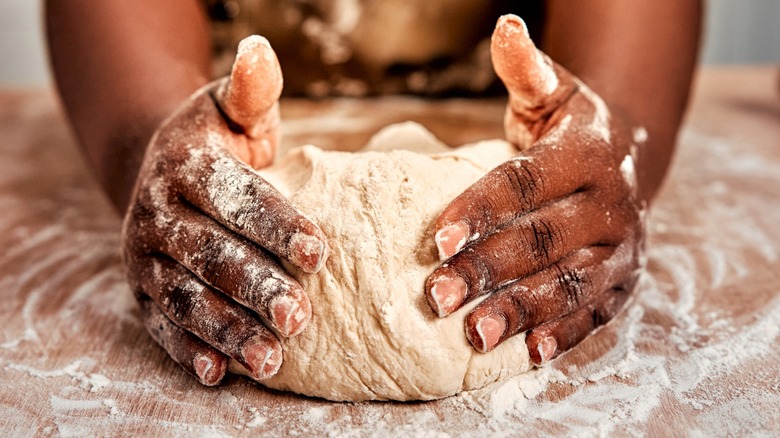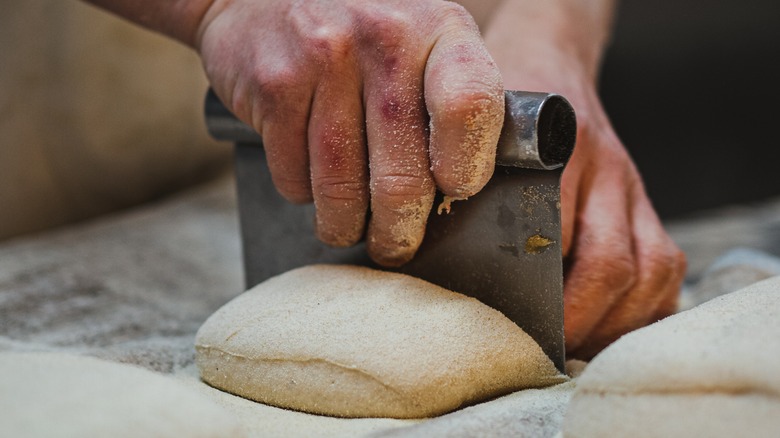Here's What To Do If You Over-Knead Your Bread Dough
Baking bread can be hard, especially if you over-knead it. Dough that is over-worked will come out of the oven with a tough crust and dry interior — not exactly the soft, fluffy pillow you were imagining spreading butter and jam onto when you began this culinary adventure. When kneading, if you insist on using a mixer, you should only mix bread dough on a low speed – but the best way to avoid over-working is to always knead your bread dough by hand. However, this time it's too late; the dough is over-kneaded and you don't want to waste a whole loaf of bread, but you also don't want it to crumble apart or be hard to slice into. So, what can you do?
Just relax! Well, not you. Your dough. While all bread dough needs time to rest, over-kneaded dough can benefit from a bit more R&R, giving it some extra time for the sugars and yeast to create carbon dioxide, which helps it rise and become less dense. All bread requires different amounts of time to rest depending on the yeast content and temperature of your kitchen, but allowing your over-kneaded dough to sit for at least 45 minutes is a good rule of thumb. Also, remember to always cover your dough with a damp cloth or plastic wrap as it rises so it doesn't dry out even more.
Knead another option?
The easy way to tell if your bread is over-kneaded is to examine its texture to see if it's dense, hard to stretch, and prone to tearing. This happens because the gluten strands in the dough have become too tight and therefore break more easily under pressure. So, letting your bread have an extra-long nap before baking can help it relax and lighten up — but there is also another option. If the dough feels dry, gently kneading in a small amount of water (or whichever liquid your recipe calls for) will help rehydrate the gluten in the dough, making it more malleable and elastic. Be sure to do this slowly so the dough has enough time to absorb the liquid.
An excellent technique to achieve this is to knead the dough with dripping wet hands, which helps distribute the liquid more easily. Unfortunately, some dough is over-kneaded to the point of no return. If you've tried the aforementioned tips and your dough is still too tough, dry, or dense, you can bake it anyway and utilize it for something else — croutons on a salad, breadcrumbs to help give baked mac and cheese a crunch, or in bread pudding (another great trick to soften it up!) — then try again with the next batch.

